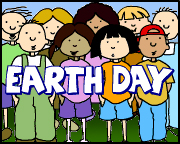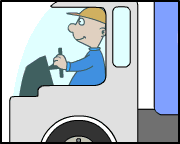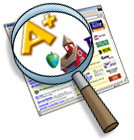|
Volume 5, Issue 8
April 9, 2007
A WORD ABOUT THIS ISSUE'S THEME

Let your class celebrate Earth Day 2007 with this little rhyme!
Hooray for Earth Day
The time of the year
When we think of our world
As special and dear.
Pick up your litter,
Recycle that glass!
Compost the garbage
With leaves and cut grass.
Remember that Earth
Needs care all the year,
To keep our land green
And keep our air clear!
Susan LaBella
Editor, Early Childhood Education Newsletter
ACTIVITY IDEAS
 BACK TO NATURE BACK TO NATURE
Try this little experiment to help young children understand the idea that some trash decomposes (goes back to nature) while some does not. Explain that trash items that do not decompose pile up on Earth.
- Gather several clay or plastic flower pots. Cover the drainage hole in each with a small stone.
- Let children fill the pots about 1/3 full of potting soil.
- Next, let children wear plastic gloves to break apart pieces of trash such as food scraps, plastic from a baggie, foil, paper, and polystyrene foam.
- Scatter the litter over the soil in the pot.
- Then cover the litter with potting soil until the pot is almost full.
- Sprinkle water over the soil until damp -- do not soak.
- Cover each pot with plastic wrap held in place with a rubber band.
- Place pots in a warm, dark place such as a closet or in a covered box.
- Check the pots periodically to moisten.
- In about four weeks, dump the contents of each pot onto a newspaper. Let children use a stick and wear plastic gloves to investigate the soil. Ask which things decomposed, or went back into the dirt? Which things did not? How can we reduce the amount of waste we throw away?
WHAT POLLUTES OUR AIR?
Cut various shapes (birds, flowers, leaves) from plastic milk cartons. Give one to each child and let him/her spread petroleum jelly on the cut out. Punch a hole in the cut outs and hang them with string on a tree or a fence. After several days, have children observe how dirty the cut outs look. Talk about how this dirt, dust, and debris pollute our air.
DON'T BE A LITTER BUG!
Use this art activity to remind children that littering harms our Earth. Give each child one section (holds one egg) of an egg carton. Let children gather from home and bring in items that would normally be considered trash: bottle tops, twigs, packing peanuts, pieces of used yarn or shoelaces. Help children turn over the egg carton section to become the litter bug's body. Next, invite children to glue on scraps to give their litter bugs eyes, noses, hair, mouths and so on. Encourage children to name their litter bugs and to place them on desks or tables as reminders: Never Litter!
EARTH JARS
Provide the following items: four glass jars with lids, a pitcher of warm water, some sand, gravel, dirt, and salt. Help children pour some warm water into each jar. Add one of the substances to each jar. Invite children to predict what will happen when you shake each jar. Shake jars one at a time. What happens in each instance? Talk with children about which substances dissolved and which ones sank. Children may want to bring in other natural substances to continue the experiment. You may wish to show the results on a class chart.
PAINTING EARTH
Show your children a globe. Point out that the blue areas on the globe represent areas covered with water. Green or other colored areas represent land. Cut out for each student a blue paper circle that fits into the bottom of a pie pan. Let each child use a spoon to dip a marble into some blue paint. Place the marble onto the blue paper and move the pie pan back and forth. Repeat using green paint. When children have completed their "earths," talk about Earth's land and water and how we should preserve it for years to come.
EATING THE BEACH
Remind children about the importance of keeping our beaches clean for the many marine animals that live or visit there. Tell children about the volunteer groups that gather each year to clean up our beaches. Then make this beach snack. Spoon vanilla pudding into clear plastic cups. Cover the pudding with crushed vanilla wafers (the sand). Decorate with gummy crabs, hard candy (rocks) and little umbrellas. Enjoy!
ON THE WEB
 Check out the following Web sites for additional background and activities.
Woodsy Coloring Sheets
You'll find some fun Earth Day tip sheets for your children to color here.
https://www.fs.fed.us/spf/woodsy/coloring.html
Planetpals
Let these cute characters share Earth Day poems, stories, activities, and so much more.
http://www.planetpals.com/earthday.html
6 Simple Things You Can Do to Help
You can empower even the youngest children… use this colorful site to help.
http://members.aol.com/kidz4peace/dinopals/earthday.htm
Earth Day Groceries Project
Learn how you can take part in the Earth Day Groceries Project.
http://www.earthdaybags.org/
Kids and Composting
A nice article on teaching kids about composting.
http://www.sdearthtimes.com/et0498/et0498s10.html
|